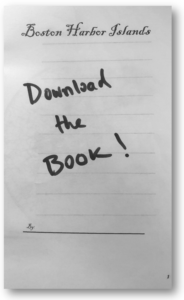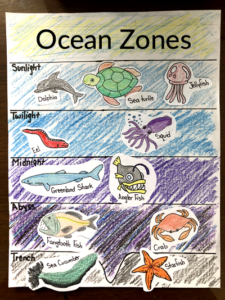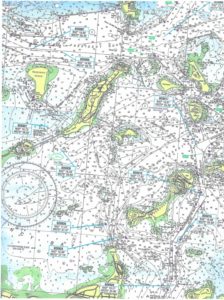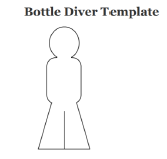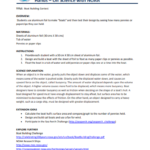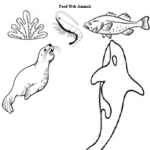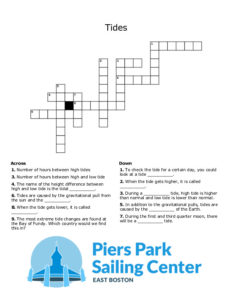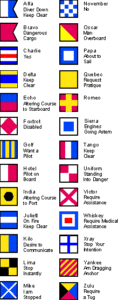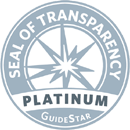Welcome to Piers Park Sailing Center Ocean Science After School! Here you will find lots of activities and resources for at-home learning.
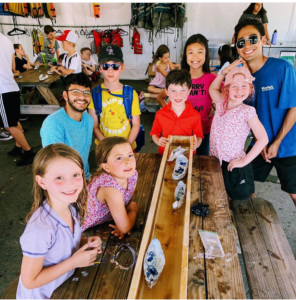
Boston Harbor Islands Activity
The Boston Harbor Islands were not always islands! 15,000 years ago the Boston Harbor Basin was covered by a glacier. As the glacier melted, the harbor islands emerged. People have used the islands for over 8,000 years, including the powerful Wampanoag Tribe. When European colonists sailed into the harbor some 400 years ago, the uses of the islands changed. Today they make up a National Recreation Area and are mostly used for passive enjoyment.
Print out the booklet that accompanies this lesson! As you watch the video, color in the images and write some notes about what you’ve learned about the history of the Harbor Islands. If you don’t have a printer that’s ok! Just use seven blank pieces of paper and draw your own booklet.
Ocean Zones Activity
Did you know that the deepest part of the ocean is 36,200 feet deep!? That’s like putting Mt. Washington on top of Mt. Everest underwater – and it would still be 880 ft short of the surface!
As you watch the video, color in the marine animals & the ocean zones. Which animal goes where?
Click here to download the ocean zones worksheets.
Sunlight: Dolphin, Sea Turtle, Jellyfish
Twilight: Eel, Squid
Midnight: Greenland Shark, Angler Fish
Abyss: Fangtooth Fish, Crab
Trench: Sea Cucumber, Starfish
Oil Spill Cleanup Activity
Demonstrate the effects of an oil spill on a much smaller scale and learn how dangerous these incidents can be to marine life. You will test different materials ability to remove oil from water, and see that using soap to dissipate the oil can be very effective.
Chart Reading Activity
Learn the basics of how to read a chart! How deep is the water? What are the channels for? What is the difference between a red and a green buoy? You’ll learn it all in this lesson of Ocean Science After School. This lesson comes with the harbor chart and a scavenger hunt worksheet. (here is the answer key too, for the parents!).
Rising Sea Level Activity
In this lesson you will learn the three main causes of sea level rise. It also comes with an experiment you can do at home – all you need is two containers, water, ice, and clay!
Cartesian Diver / Scuba Diver in a Bottle Activity
Design and build a scuba diver in a bottle! Use the principle of buoyancy and the ideal gas law to make the diver sink to the bottom and rise back up to the top. Click here to download the diver cut-out.
Buoyancy / Design a Boat Activity
Buoyancy is the force that makes boats float! When designing a boat, you have to consider how buoyant you want it to be versus how much friction will be created as is moves through the water. Have a contest at home to see who can make the boat that holds the most pennies. All you need is tinfoil and pennies.
Food Chain Activity
Learn about primary through quaternary consumers in the ocean. Who eats who & how do they survive? This lesson comes with a coloring activity that you can do at home. Click here to download the sheet.
Tides + Crossword Activity
Learn about the forces that cause tidal fluctuation, the difference between a spring tide and a neap tide, and more in this activity. Click here for the crossword puzzle answer key. Click on the image to the left for the blank puzzle.
Build a Weather-Vane (Windex) Activity
Meteorologists use a weather-vane to predict weather patterns. Sailors use a windex (the same thing with a different name) to tell where they can and cannot sail. Build your own weather-vane at home with simple materials you have around the house in this Ocean Science After School activity.
Make Your Own Compass Activity
Learn about Earth’s magnetic poles and how to build your own compass. A compass is one of the most important tools for navigating on the water.
Understanding Overfishing Activity
What happens if we take fish from the sea faster than they can replenish? Do this activity at home with any small item. We recommend a snack like goldfish or Swedish Fish.
Make Your Own Burgee Activity
A burgee is a pennant shaped flag that is usually used to identify a recreational boating facility. In this activity you can design your own burgee at home. Click here to download the template.
Nautical Flag Word Search Activity
Nautical flags are an international code system used for two ships to signal to each other or for a ship to signal to shore. They are also called signaling flags. Using a group of different colored flags, shaped flags, and markings each one has a different meaning. No matter where you are in the world, this language of international maritime signaling is the same. With this activity you can do a word search (in nautical flags) at home.
Click here for the flag meanings.
Click here for the word search.
Click here for the answer key.
Density and Salinity Activity
Water Conservation
Density and salinity – why is it easier to float in salt water? Compare the density of salt water versus cooking oil. Then test salinity in water to make an egg float.
How much water is there on earth and how much can humans use to drink? 97% of the water in the world is saltwater contained in our oceans. Another 2% is stored in glaciers, but many glaciers are rapidly melting as a result of climate change. It is very important to conserve the small amount of potable water we have available to us!
Sea Birds of Boston
Learn about the different coastal birds that live around Boston, Winthrop, Chelsea, Revere and go outside to see them yourself!
Ocean Acidification
Learn about the pH scale and do an experiment at home. Use different items around the house to make water more acidic or basic – and see how it changes colors – then try the second experiment and see the effect an acidic environment has on an eggshell.

